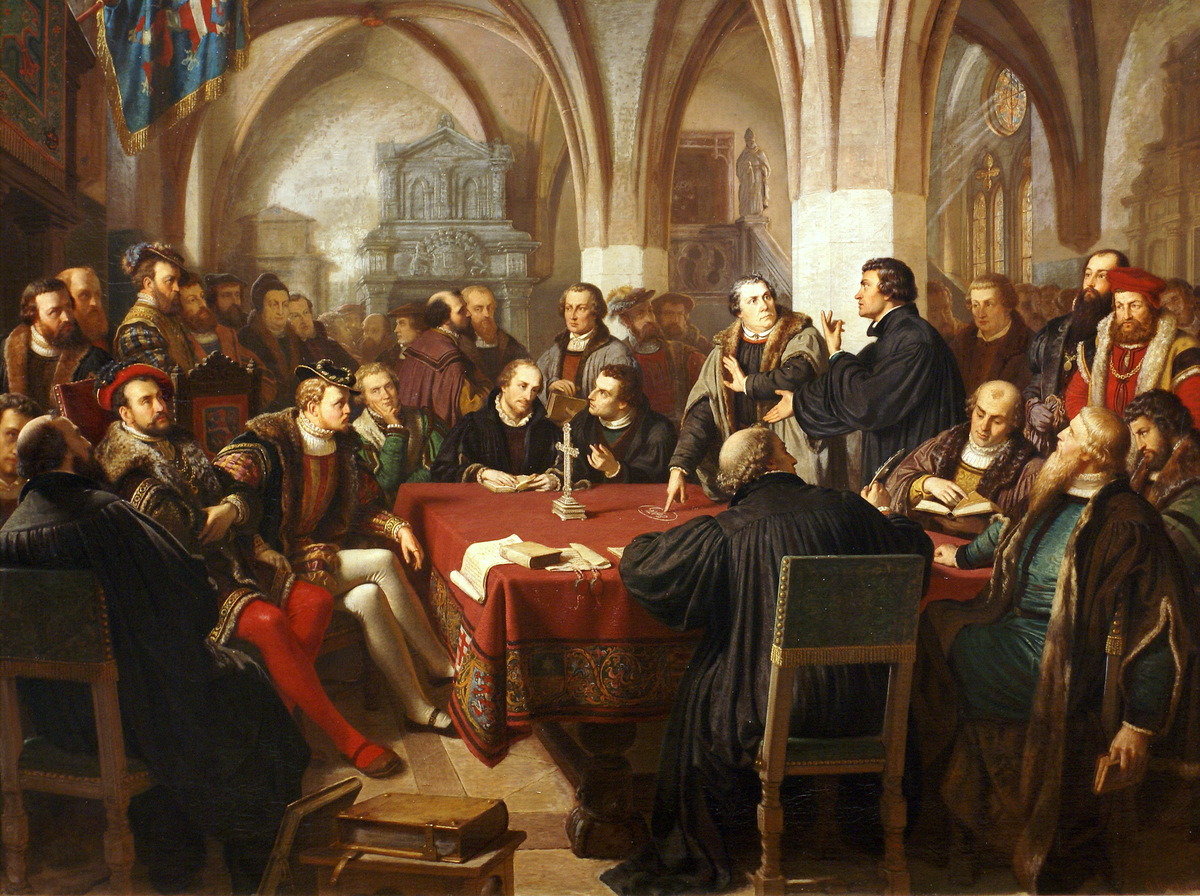Abstract
After the Lutherans raised their protest at the Imperial Diet of
Speyer in 1529, thus giving rise to the name “Protestant,” the doctrinal
quarrel between Martin Luther and Ulrich Zwingli (1484-1531) of Zurich
escalated. In the late 1520s, this debate (and the campaign against
sectarian groups) distracted Protestants from their attack on Rome and
Catholicism. Landgrave Philip of Hesse (1504-67), anxious to restore
unity and to form a Protestant military alliance, invited Luther,
Zwingli, and others to a colloquy in Marburg in October 1529. Luther and
Zwingli debated the correct interpretation of Christ’s words regarding
the Eucharist – “this is my body” – with Zwingli taking a spiritualist
line and Luther insisting on a literal interpretation. This
nineteenth-century image shows Luther pointing to the Greek word “estin”
(“is”), which is written on the table, and Zwingli pointing upwards
(because Christ ascended to heaven and will return only with the
apocalypse). Philip Melanchthon and Martin Bucer converse in the
background.
